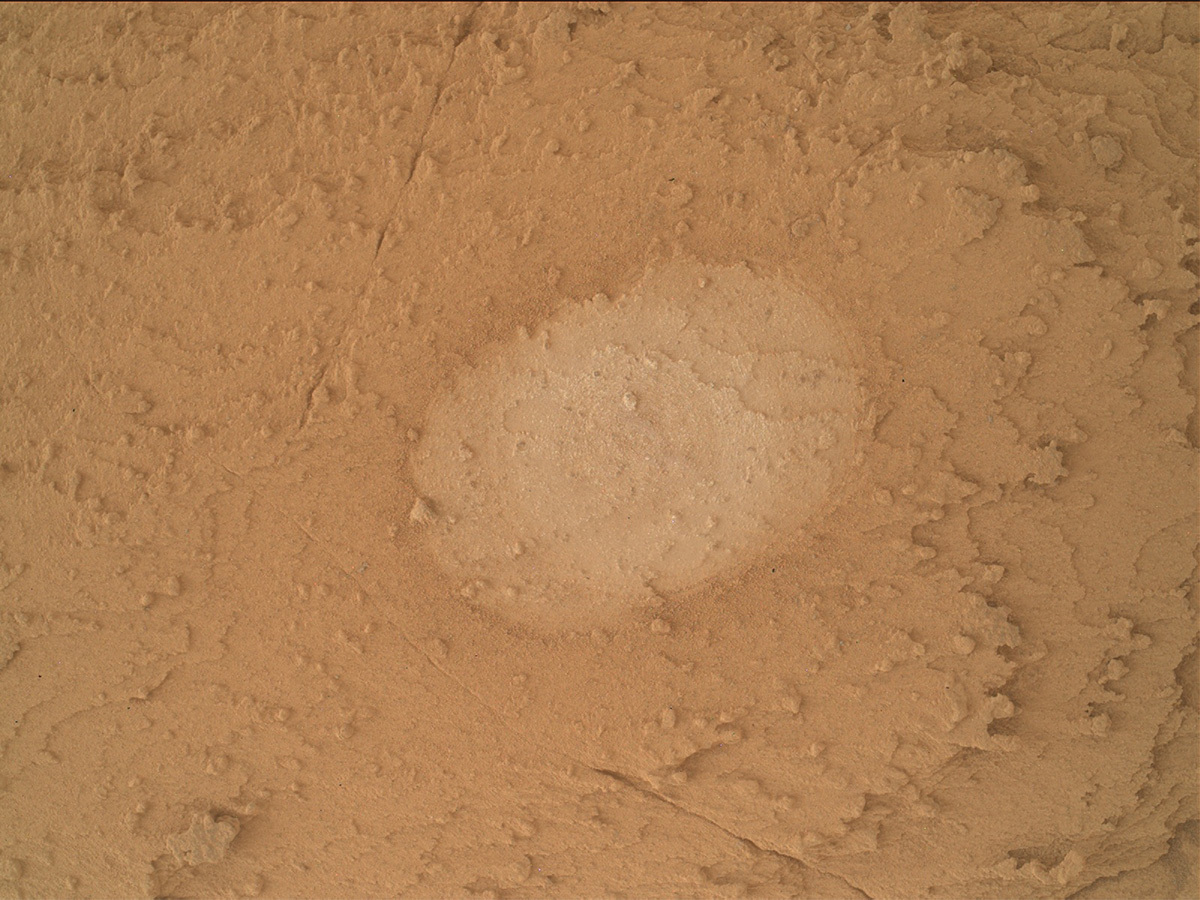3 min read

Earth planning date: Friday, May 5, 2023
We continue our triage of the “Ubajara” potential drill site in this plan. In the last plan, we brushed the surface and did some further investigation of Ubajara’s chemistry and structure (APXS, ChemCam and MAHLI). Information that came down this morning indicated that the target appears to be representative of what we have been seeing recently, as we climbed up the Canyon from the Marker Band.
In this plan, the Rover planners (RPs) planned a “preload” test, to get an idea of how the rock will behave when drilled. This involves putting the target under some pressure to make sure the rock is stable and safe to drill. MAHLI will then take two documentation images which hopefully will show no changes!
Curiosity won’t be sitting idly for the rest of the weekend. APXS and MAHLI are investigating a patch of darker material at "Ilha Grande” and some adjacent bedrock at “Ilha Grande offset” for comparison. MAHLI is also imaging the target “Bwesse Kiiki” which was analyzed by ChemCam’s LIBS instrument on sol 3818 (Tuesday of this past week).
Meanwhile ChemCam will analyze some nodular bedrock just beyond the Ubajara bedrock block at “Carajas” and will take a long distance image (“LD RMI”), looking ahead to Gediz Vallis, a large ridge feature which has been high on our “dream list” of places to go in Gale since before landing. This ChemCam RMI will focus on an area of large stones and boulders which were identified in previous images. We have been talking about the science we would do here for so many years, it's hard to believe we are close enough to identify individual stones and boulders! Mastcam is acquiring a “9x3 mosaic” (3 rows of 9 images) of fractured light toned rocks ahead of us in our future drive direction. These are close to some small impact craters, so we are interested to look at the fractures and see if they are related in any way to the craters.
ENV and Mastcam will monitor dust with a “crater rim image” and two tau measurements. These help to quantify the abundance of dust in the atmosphere. ECAM will add several images to characterize active environmental conditions in Gale, looking at clouds and searching for dust devils. DAN and REMS round out the environmental monitoring, measuring hydrogen concentrations (DAN) and temperatures (REMS).
Written by Catherine O'Connell-Cooper, Planetary Geologist at University of New Brunswick







